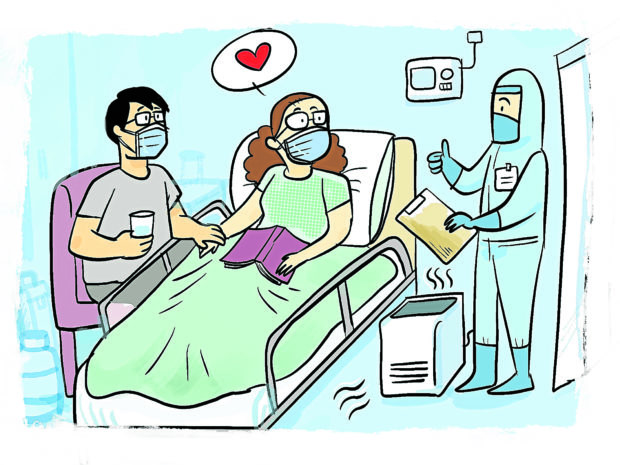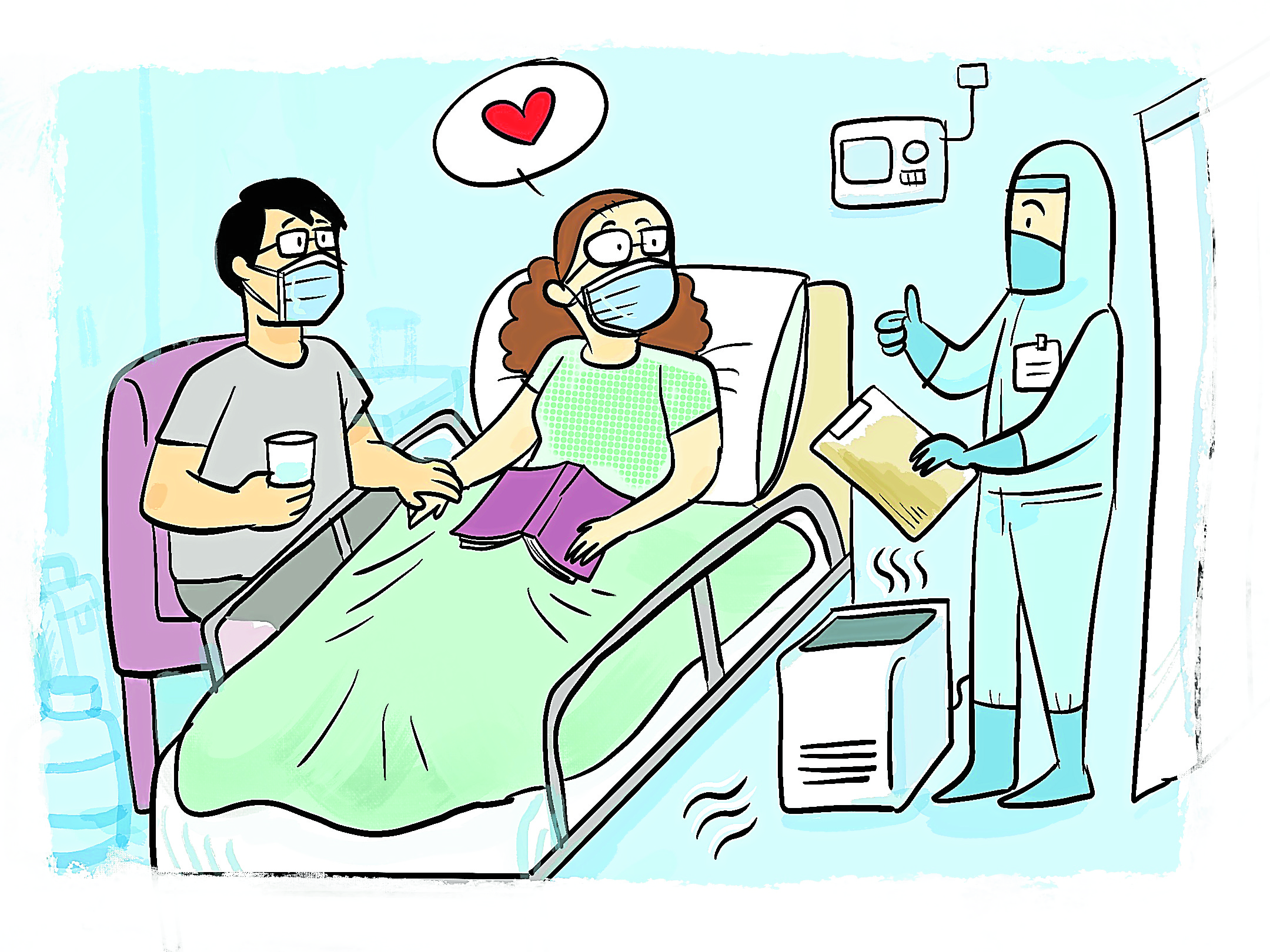I was a non-COVID-19 patient in a hospital when Manila entered yet another ECQ. But I felt very safe.
I found myself reassuring friends and relatives who, after asking after me, would express their own their fears of going to hospitals during the pandemic. I told them there are protocols in place, especially in big hospitals, to keep everyone safe.
The emergency room (ER) is probably the scariest spot before getting into a private room, mainly because it’s an area where COVID-positive and non-COVID patients meet. But there are COVID-19 and non-COVID areas even there. There are plastic partitions that separate you from other patients. Still, I think it’s best to be as careful as you can when you find yourself in the ER.
Reassuring
At Our Lady of Lourdes Hospital in Sta. Mesa, Manila, where I was confined, every space had an air filter, and I found it reassuring to see these little white boxes by the headboard.
However, that’s not the case in every ER. In the hospital near where we live, there are no air filters in the ER cubicles. Instead, these are positioned outside the cubicles.
This should be fine since each cubicle is enclosed in plastic, but I worried about the case of the patient who came before me. I decided that the next time I needed to go to the ER there with flu-like symptoms, I would opt to stay outside the ER, which they allow.
But even with the presence of air filters at Our Lady of Lourdes Hospital, we didn’t let our guard down. You never know the situation of the patient next to you.
We practiced double masking while in the ER and, of course, had our face shields on. When an extra mask touched a blanket, a nurse cautioned against using it, an advice I followed. Some of the standard procedures include a swab test and a chest X-ray. Even before my swab test result, the doctor who had checked my breathing told me I didn’t have COVID-19 despite my intermittent coughing.
“I’ve checked hundreds of COVID patients and they don’t breathe like you do. I don’t think you have it,” he told me.
Transition room
Despite the initial diagnosis, protocols prevented the doctor from putting me in a regular room straight away. A negative reverse transcription polymerase chain reaction swab test was necessary. We knew better than to argue because it meant everybody else was going through the same procedures, which, in turn, kept us safe.
What made the transition room different from a regular room was that each room had its own air filter. The corridor that leads to it was also lined with air filters. There were layers upon layers of plastic dividers that kept the air from coming out. I am not kidding when I say that at the entrance, there was a warning to not enter.

Nurses were in full disposable hazmat suits. The rooms were more expensive, too. My husband also had to undergo an antigen test. He was not allowed to leave the transition room at any point.
Food was delivered by the assigned nurse, including the ones ordered online for caregivers. Hospital food came in boxed containers that had to be binned after each meal. My sensible mom had us bring a 6-gallon container of water. This was a lifesaver.
The convenience of being able to go out is also why you want to get your swab test result as soon as possible.
When I went in, I already had my swab done in another ER, which I took because I had high fever and cough (which turned out to be a bad case of gastroesophageal reflux disease). I opted to wait for the result of that rather than take a new one, not knowing it would take the other hospital more than 24 hours to release the results.
Paying for PPE
Time is of the essence while in transition because patients pay for the personal protective equipment (PPE) used by the nurses and technicians, which could cost P4,500 or more per set. Some health cards cover this. My nurses went through at least five PPE in our 26-hour stay.
Once cleared, we were transferred to a regular room. My husband was allowed to go out to buy water, food and toiletries.
My nurses in the regular room still wore PPE, but the washable kind. Technicians who had to do my CT scans didn’t need any special PPE because I tested negative. It was pretty much like prepandemic times except, this time, everybody had to wear masks at all times.
You’ll save money if you go to a laboratory where swab test results come out quickly. But more important than saving money, when you feel sick and an e-consult just won’t do, don’t be afraid to go to the hospital and get yourself checked. They have more protocols than you can think of to protect you from COVID-19. And they are more capable of looking after your non-COVID needs. INQ









































